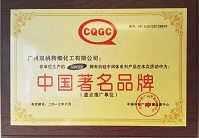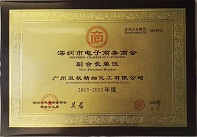
![]() E-mail: admin@gz-chemical.com
E-mail: admin@gz-chemical.com
Email us,best price and silane solutions for you!
Tel:+86 (20) 29035969

![]() E-mail: admin@gz-chemical.com
E-mail: admin@gz-chemical.com
Email us,best price and silane solutions for you!
Tel:+86 (20) 29035969


A team of physicists from Immanuel Kant Baltic Federal University together with their
colleagues from National Research Nuclear University MEPhI (NRNU MEPhI) has developed
a tungsten oxide-based detector of hydrogen in gas mixes. They manufactured thin tungsten
oxide films with various additives and compared their characteristics. One of the film detectors
demonstrated a 100-fold increase in sensitivity when compared to a control sample. The
article was published in Thin Solid Films.
Hydrogen is one of the most widely used gases in the world, used in the chemical industry
and in controlled nuclear fusion experiments. Its molecules have the smallest possible mass
and size, and it is therefore extremely difficult to store in any vessel, as it leaks from almost
any opening. Hydrogen leakages are very dangerous for industry, as hydrogen mixed with
oxygen forms explosive detonating gas. With the development of the hydrogen energy sector,
the prevention of leakages becomes an important safety issue.
To prevent hydrogen leaks, its concentration in an industrial facility should be constantly
monitored. Usually this is done with gas detectors, the most popular of which are
amperometric analyzers. They are based on the ability of gases to change the electrical
conductivity of metals upon contact with them. In the course of measurements, fixed voltage
is applied to the ends of a metal plate, and a device measures the strength of current going
through it. As the strength of current directly depends on the conductivity of a material, when
the concentration of hydrogen increases, conductivity changes as well. The sensitivity of
measurements is determined by the properties of the sensor, i.e. the plate under voltage.
BFU scientists and colleagues from NRNU MEPhI studied new materials based on tungsten
oxide (WOx). One of them was obtained by means of depositing WOx on a silicone carbide
(SiC) substrate. Another material was developed in the same manner, but the tungsten oxide
layer was covered with additional platinum coating. Then the scientists determined the
sensitivity of the two films by applying voltage to them and putting them into an oxygen
environment. After that, 2 percent of hydrogen was added to it. The material without the
platinum coating demonstrated a 15-fold increase in the current strength compared to
pure tungsten oxide. When the same property was measured in the second material, it
showed a 100-fold increase.
"We have studied nanomaterials that may be used as a basis for hydrogen leakage sensors.
In the course of our work , we identified the requirements for the structural properties of
these materials that should secure high gas detecting efficiency, " says Dr. Alexander
Goikhman, a co-author of the work and the head of the Research and Educational Center for
Functional Nanomaterials.
Guangzhou Double Peach Fine Chemical Co.,Ltd
Address: No 3401 Huangpu East Road, Huangpu District, Guangzhou, China
Tel:+86 (20) 29035969 Fax:+86(20)29035979
Tel/Wechat/Whatsapp:0086 13826126978 admin@gz-chemical.com